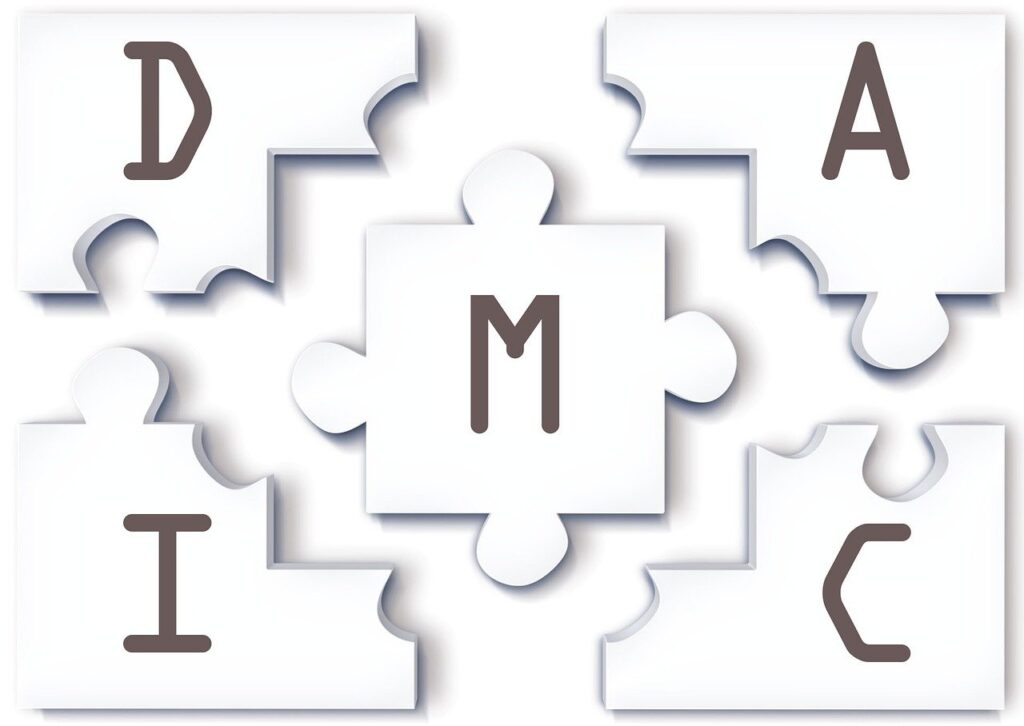I. Introduction
Welcome to the exciting world of Six Sigma! If you’re a Six Sigma beginner or practitioner, you’re in the right place. In this article, we’ll be demystifying one of the most crucial aspects of Six Sigma: Data Collection. But before we delve into the heart of the matter, let’s take a brief detour and understand the basics of Six Sigma.
In This Article
What is Six Sigma?
Six Sigma is a systematic approach aimed at enhancing the performance of a process by identifying and eliminating defects. The ultimate goal? To achieve near-perfect results – 3.4 defects per million opportunities, to be precise. It’s a method that has helped organizations across industries improve their operations and bolster their bottom line.
The Power of Data in Six Sigma
At the core of Six Sigma lies the power of data. In the world of Six Sigma, data is the backbone that supports informed decision-making, drives process improvements, and eliminates guesswork. Without data, Six Sigma wouldn’t be the powerhouse methodology that it is today.
The Measure Phase: Data’s Playground
One phase of Six Sigma where data plays a starring role is the Measure Phase. This phase is where you collect data related to the process being studied. It sets the foundation for analysis and improvement, which is why it’s so important to get it right.
In the upcoming sections, we’ll dive into data collection in Six Sigma, how to choose the right approach, and answer some frequently asked questions. So, whether you’re a Six Sigma green belt looking to level up, or you’re brand new to this world, stay tuned! You’re about to embark on an insightful journey into the nuts and bolts of data collection in Six Sigma.
II. Understanding Data Collection in Six Sigma

Defining Data Collection in Six Sigma
Data collection in Six Sigma isn’t merely about gathering information; it’s about obtaining the right data to identify, analyze, and eliminate process variations and defects. It involves identifying key performance indicators, deciding what data to collect, how to collect it, and then doing the actual data collection. The data gathered can be both qualitative (categorical, subjective, etc.) and quantitative (measurable, numerical).
The Vital Role of Data Collection in the Measure Phase
The Measure phase of Six Sigma’s DMAIC (Define, Measure, Analyze, Improve, Control) framework is where data collection comes into play. This phase involves measuring the existing system by gathering detailed data. This data doesn’t just measure current performance; it also provides a benchmark against which improvements can be evaluated.
Choosing the appropriate data collection method is crucial at this stage. An incorrect method could lead to skewed data, leading to inaccurate analysis, and ultimately incorrect solutions. That’s why understanding the different methods and tools for data collection in Six Sigma is so important, which is what we’re about to dive into next.
In the next section, we’ll explore the Six Sigma approach to data collection, giving a brief overview of the six data collection and analysis methods used in this practice. We’ll then delve deeper into each method, giving you a comprehensive understanding and enabling you to choose the right approach for your specific project.
Stay with us as we unravel the intricacies of data collection in Six Sigma!
III. Six Sigma Approach to Collecting Data

Understanding the Six Sigma Approach to Data Collection
The Six Sigma approach to data collection revolves around the DMAIC framework. DMAIC stands for Define, Measure, Analyze, Improve, and Control. Here’s how it breaks down:
- Define: Identify the problem or opportunity for improvement.
- Measure: This is where data collection comes in. Measure the current performance and gather relevant data for later analysis.
- Analyze: Determine root causes of defects or variations.
- Improve: Develop, test and implement a solution that addresses the root causes.
- Control: Monitor the solution to ensure it’s effective and make adjustments as necessary.
Each phase is data-driven, particularly the Measure and Analyze phases. Effective data collection is crucial here. But how exactly do you collect data? That’s where Six Sigma’s data collection and analysis methods come in.
An Introduction to the Six Methods of Data Collection and Analysis
Six Sigma employs several data collection and analysis methods, each with its unique benefits and suitable scenarios. They include:
- Check Sheets
- Histograms
- Pareto Charts
- Cause-and-Effect Diagrams
- Scatter Diagrams
- Control Charts
Each of these methods provides a different approach to gathering and analyzing data, which we will explore in the next section. Remember, choosing the right method is crucial to your project’s success, so let’s dive in and learn more about each one.
Stay tuned for a comprehensive exploration of these methods and tools, as well as tips for choosing the right one for your project.
IV. Exploring the Methods of Data Collection and Analysis

As mentioned earlier, there are six primary methods and tools used in Six Sigma for data collection and analysis. Let’s delve deeper into each of them:
Check Sheets
A check sheet is a basic yet effective tool for collecting and organizing data. It’s essentially a document used for gathering data in real-time at the location where the data is generated. Check sheets are useful when data can be observed and collected repeatedly by either the same person or the same location.
For example, let’s say you’re trying to improve the process of order delivery. You could use a check sheet to track the reasons for delayed orders. This allows you to quickly identify the most common reasons and focus your improvement efforts where they’ll have the most impact.
Histograms
Histograms are a type of bar graph that represents the distribution of data. They’re used to plot the frequency of score occurrences in a continuous data set that has been divided into classes, known as bins. Histograms are useful in visualizing the shape of your data, whether it’s normally distributed, skewed, or bimodal, for instance.
For example, you might use a histogram to understand the distribution of cycle times in a manufacturing process. This will help identify whether there’s variation that needs to be addressed.

Pareto Charts
A Pareto chart is a type of chart that contains both bars and a line graph. The bars represent individual values (usually in descending order), and the line is the cumulative total. Pareto charts are based on the Pareto Principle, which states that 80% of effects come from 20% of causes.
In a customer complaint context, a Pareto chart can quickly show which issues are causing the majority of complaints and should, therefore, be addressed first to improve customer satisfaction.

Cause-and-Effect Diagrams
Also known as Ishikawa or fishbone diagrams, these diagrams help teams brainstorm potential causes of a problem, sort and relate them, and find the root cause. The diagram looks like a fish’s skeleton with the problem at its head and the causes for the problem feeding into the spine.
If a product has a high rate of defects, for instance, a cause-and-effect diagram can help identify potential causes – such as issues with the materials, methods, people, or equipment involved in production.
Scatter Diagrams
Scatter diagrams plot paired numerical data on a graph to look for relationships or patterns, making them ideal for identifying correlations between two variables. If you’re seeing an unexpected rise in defects, a scatter diagram might show that defects increase as machine temperature rises, pointing to a potential cause.
Control Charts
Control charts are used to study how a process changes over time. They have a central line for the average, an upper line for the upper control limit, and a lower line for the lower control limit. Data points outside these lines indicate that the process is out of control and needs attention.
Control charts can help monitor any process, be it tracking manufacturing defects over time or call wait times in a call center, to determine if the process is stable and predictable.
Remember, each of these tools comes with its strengths and ideal scenarios. Your choice will depend on the type of data you have and the nature of your Six Sigma project.
Stay tuned for the next section, where we’ll discuss how to choose the right data collection method for your project.
V. Choosing the Right Data Collection Method
Choosing the right data collection method for your Six Sigma project is a critical step. The method you select can significantly impact the quality and usability of your data, and ultimately the success of your project. Here are some factors to consider when making your decision:
1. Nature of Your Data
Are you dealing with qualitative or quantitative data? The nature of your data can greatly influence your choice. For instance, Check Sheets and Pareto Charts work well with categorical data, whereas Histograms and Control Charts are ideal for continuous data.
2. Your Project’s Objective
Your project’s aim will guide your decision. If you want to understand the distribution of a particular variable, a Histogram would be a great choice. But if you’re trying to find out whether two variables are related, a Scatter Diagram would be more beneficial.
3. Data Collection Resources
Consider your resources. How much time do you have for data collection? What’s your budget? Who will be collecting the data? These factors can all influence your choice. A method that requires specialized skills or expensive equipment might not be the best choice if you have limited resources.
4. Data Reliability and Validity
The method you choose should enable you to collect data that is both reliable (consistent and repeatable) and valid (accurate and measures what it’s supposed to measure).
Tips on Avoiding Common Pitfalls in Data Collection

To ensure that you’re on the right track, here are some tips to help you avoid common pitfalls in data collection:
- Define your data collection plan clearly. Know what data you need, how you’ll collect it, and how you’ll ensure its accuracy and reliability.
- Train your data collectors. Make sure they understand how to use the chosen method and what to do if they encounter problems.
- Pilot your data collection method. This helps identify any issues before you fully roll out your data collection.
- Be consistent. Use the same data collection method and conditions each time to ensure comparability.
- Regularly review and refine your data collection process. This helps you spot and correct issues promptly, ensuring that your data remains high quality and useful.
Now that we’ve covered how to select the appropriate data collection method for your Six Sigma project, let’s tackle some frequently asked questions related to this topic.
Stay with us as we continue to delve deeper into the fascinating world of Six Sigma data collection.
VI. Frequently Asked Questions
Let’s take a look at some frequently asked questions related to data collection within Six Sigma and the Measure phase.
1. What are the common mistakes when collecting data in Six Sigma?
Common mistakes include not defining what data is needed before starting to collect, using inconsistent methods for data collection, and not properly training those who will collect the data. Other errors might be ignoring outliers instead of investigating them, not piloting the data collection method, and not regularly reviewing the data collection process.
2. How can I ensure the reliability and validity of my data in Six Sigma?
Ensuring the reliability and validity of your data involves creating a clear data collection plan, training your data collectors, and piloting your data collection method. It’s also important to use the same conditions for data collection each time to ensure comparability and to review your data collection process regularly to spot and correct any issues promptly.
3. How does the choice of data collection method impact the Measure phase in Six Sigma?
The choice of data collection method can significantly impact the Measure phase. A well-chosen method will provide you with quality data that accurately reflects the current performance of your process, allowing for effective analysis and improvement. An inappropriate method, however, could lead to skewed or irrelevant data, misleading analysis, and ultimately ineffective solutions.
4. Can the data collection method affect the success of a Six Sigma project?
Absolutely! The data collection method forms the basis of your project’s Measure phase, which sets the foundation for the rest of the project. The better the data you collect, the more accurately you can analyze your process and identify solutions. Inaccurate or insufficient data can lead to incorrect analysis and ineffective solutions, jeopardizing the success of your project.
5. What are some tools commonly used in Six Sigma for data collection?
Some of the tools commonly used in Six Sigma for data collection include Check Sheets, Histograms, Pareto Charts, Cause-and-Effect Diagrams, Scatter Diagrams, and Control Charts. The choice of tool will depend on the nature of your data and the specific objectives of your Six Sigma project.
We hope these answers have clarified some of your queries. In our next section, we’ll wrap up our discussion on data collection methods in Six Sigma.
Stay tuned!
VII. Conclusion
In our journey through the landscape of data collection in Six Sigma, we’ve unearthed the vital role of data, especially during the Measure phase of the DMAIC framework. We’ve explored various methods and tools for data collection and analysis, each with its unique strengths and ideal scenarios, from Check Sheets and Histograms to Pareto Charts, Cause-and-Effect Diagrams, Scatter Diagrams, and Control Charts.
Remember, the success of your Six Sigma project heavily depends on the quality of data collected. It’s not just about collecting data, but gathering the right data, using the right tools, and doing it in the right way. Choosing the correct data collection method will provide a strong foundation for your analysis, paving the way for valuable insights and successful process improvements.
We hope this guide has empowered you with the knowledge needed to choose the right data collection method for your Six Sigma project. Remember, every Six Sigma journey is unique, so keep an open mind, learn from each experience, and continually refine your approach.
Don’t forget to check out our ongoing series about Six Sigma, where we delve deeper into each phase of the DMAIC framework, providing insights, tips, and tools to guide you on your path to process improvement.
Stay curious, and keep improving!
VIII. References & Further Reading
For more detailed information about Six Sigma and its methodologies, you can explore the following resources:
- The Council for Six Sigma Certification – This website offers a comprehensive overview of Six Sigma principles and methodologies. Their resources and certification programs are excellent for beginners and seasoned practitioners alike.
- iSixSigma – This online magazine and community dedicated to Six Sigma provides articles, case studies, forums, and other resources that can enhance your understanding.
- Cracking the Six Sigma Code: Your Guide to Data-Driven Excellence – Unleash the power of Six Sigma! Discover its principles, methodologies, and real-world applications. Achieve excellence with data-driven success.
Remember, the key to success in Six Sigma is continual learning and improvement. Keep exploring, keep asking questions, and keep refining your approach.
We hope you found this article informative and engaging. For more insightful content on Six Sigma, make sure to explore other articles on our website. Let’s keep making processes better, one project at a time!




